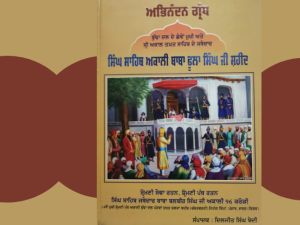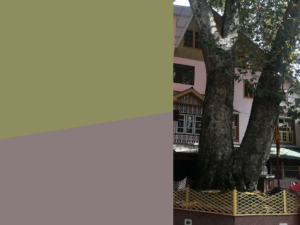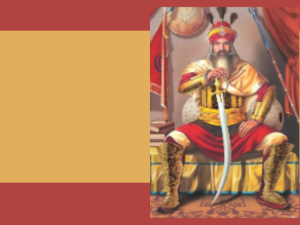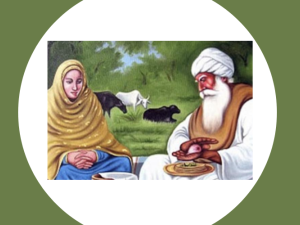It is interesting to note that Tagore had always been deeply influenced by the philosophy and history of Sikh religion. In 1885 Tagore wrote an essay 'Beer Guru' (valiant saint) which was his veneration of Guru Gobind Singh. Tagore wrote three poems on Guru Gobind Singh viz Nishfal-Hpahaar, (1888, Futile Gift), Guru Gobinda (1899) and Shesh Shiksha (1899, last teachings).
In his another poem 'Prarthonate Daan', the inspiring story of Bhai Taru Singh is mentioned who was executed by the Mughal Governor. In his yet another all-time classic poem 'Bondi Bir' he eulogizes Sikh valor and pays a poetic tribute to "Baba Banda Singh Bahadur", the military commander of Guru Gobind Singh. The famous Punjabi artist Sir Sobha Singh (1901-1886) and renowned folk song compiler Devendra Satyarthi were also deeply influenced by Tagore and adopted Tagore's ideals and even his looks.
Rabindra Nath Tagore was always an inspiration for Punjabi intellectuals, to boost their mother tongue Punjabi. He inspired Dr Allama Iqbal and the actor Balraj Sahni including many others to love their mother tongue. In one meeting he told harshly to Balraj Sahni, "Hindi is not your mother tongue you are Punjabi. Why are you not writing in Punjabi language I am writing in Bengali, which is regional language. In spite of that, not only India but the whole world reads my writings.
The question is not of excellence but a writer should be deeply associated with his birthplace, people and language. I do not agree with you that Punjabi is a remote and low language. The language in which Guru Nanak Dev Ji like famous poets wrote poetry is excellent one. Punjabi and Bengali literature are very old. I am trying to translate some verses of of Guru Nanak Dev Ji into Bengali but I am sure I will not do justice. In these circumstances you spend whole of life writing in other languages...".
Tagore came to Kashmir in 1915 on the invitation of his close friend and Bengali poet Jagdish Chander Chatterjee, who was the superintendent in Kashmirs Government's Research Department. Tagore along with his son and daughter-in-law and one Bengali poet Satindernath Datta came to Kashmir via Rawalpindi. Chatterjee hired a beautiful houseboat 'Paristan' for Tagore and his fellows. They visited a number of places in Kashmir. He felt proud to meet farmers, artists and craftsmen. In Srinagar, a poetic symposium was conducted in Sri Pratap College where poets, intellectuals and artists gathered together. Tagore came to the dais and with beautiful words mentioned the natural sceneries, historic background and Kashmir's cultural aspects.
A small poetic symposium was also held in the house of Pandit Anand Koul Bamzai, on the right bank of Jhelum (Habba Kadal). Tagore praised the poets like poet Mehjoor and Zinda Koul. Kashmiri literary figures met Tagore in a houseboat and offered gifts to him. The golden shining moon, the dawn, the bright sun rays, cold night, all inspired him. He wrote some poems in Kashmir. The beautiful mountains, forests, sweet springs and natural brooks of Kashmir are absorbed in his writings. Kashmiris along with other Indians celebrated his birthday in 1961-62 in Srinagar. The Government of Jammu & Kashmir established 'Tagore Memorial Hall' in his memory. This hall continues to be a vibrant hub of cultural, literary and intellectual activities till date.






